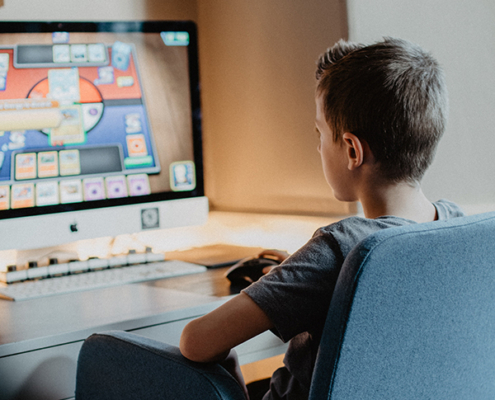Learning a skill requires more than just a weekly class. Like when learning a new language or musical instrument, students must practice the programming concepts and skills outside of the lessons. The programming classes are for an hour each week, and some homework is assigned to encourage extra practice. The goal is that the student attempts the homework, reaches out to me by email for additional assistance and guidance, and completes the homework.
Many students save any questions for the next class, which often slows down their progress and deprives them of many other benefits. This is just one reason why communicating questions in between classes is the best way for learning to happen. In the following post, we will look at other ways that communication between classes is beneficial.
Verbalizing Questions Helps with Understanding
Students learn a lot by verbalizing their ideas. When they put their confusion, concerns or questions into writing, they identify what they know, what they don’t understand or which part of the program is not working. Learning is reinforced tremendously when students write down their thoughts in words, communicate those thoughts with me through email, exchange messages back and forth, and try out my suggestions until we arrive at a working solution.
Frequent Communication Builds Familiarity
Frequent communication from the student in between classes leads to improved education in class. When we work through email between classes, I am able to become more familiar with their learning style, their approach to debugging programs, and what kind of programming exercises engage them more. I can then customize the course for the student, striking a balance and keeping the course sufficiently challenging yet not overwhelming.
Practice for Future Studies
Another benefit is that students get practice in asking questions of instructors, coaches, and teaching aides. This is a useful skill to develop as they enter higher grades. “I don’t understand diffraction” or “I need help with the while loop in this program?” is not the best way to get help on that topic as it identifies the topic but fails to say exactly what help is needed. By communicating with me between classes, they will get to practice asking questions that are more specific in describing the help they need:
“I understand that diffraction is when a wave encounters an obstacle and bends. What I don’t get is how does the wave get back to its original direction? “
“I know the while loop should run 6 times, starting with 0, but I am unable to increase it exactly by one each time?”
What Parents Can Do to Help
So, what can a parent do to encourage the student to communicate with me between classes? It is actually quite simple — when you talk about the programming classes, don’t simply ask, “What program did you write?” Instead, try, “Was there any program you wrote this week that didn’t work? How did you try to find the problem? How did you fix it? Did you try sending a message to Mrs. Dash?”
Messages from my students are ones that I look forward to reading. Even after many years in teaching, I continue to learn something new from the students and their messages each day. I hope to see more messages from your student.



 Photo: Rohit Farmer | Unsplash.com
Photo: Rohit Farmer | Unsplash.com